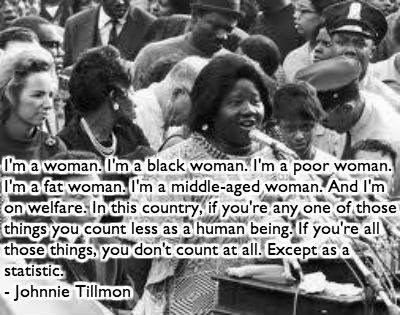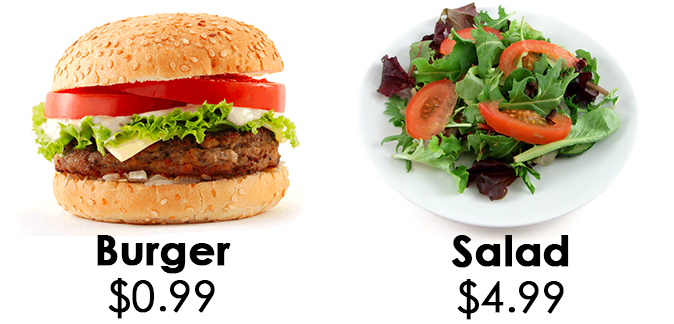Poverty & Obesity Are Heavily Linked: What Can We Do?
By:
In a recent article in The Guardian, columnist Barbara Ellen questions society's inequality when it comes to income and obesity: "Why do a certain class of people feel that it is perfectly reasonable for them to require expensive, sustained, multilayered help to keep fit, but all they have for less moneyed overweight people, is contempt, judgment and "eat less, move more"? What makes one person's weight loss so much righteously complicated than the next person's?" Ellen is onto something...

Every case of obesity, of course, is different but the resounding point remains: lower-income individuals do not have the same opportunities to live a healthier lifestyle as higher-income people. And when I say "healthier lifestyle" I'm not talking about expensive diet plans, personal trainers, or gym memberships but rather just the bare minimum: healthy food. Let's look at someone living off a $9 an hour full time job - which is $1.75 more than the federal minimum wage. Now, earning $9 an hour, you have an annual gross income of $18,720 and you need to think wisely about how you spend it. The average cost of rent and utilities in the U.S. in 2013 was $962, which comes out to $11,544 per year. That leaves you with $7,176 a year to spend on the other necessities: clothes, health insurance, food. Now, just for the sake of making things easier, we'll assume you don't have a car, and thus, the cost of a car and car insurance is nonexistent (though you will have to spend money on public transportation).
McDonald's recently came under fire in Stephen Colbert's viral rant on their impossible budget plan. Among many of their budget anomalies - such as $0 allocated for heating - is health care insurance: the budget plan suggests employees pay $20 a month on health insurance, despite the fact that the average health insurance premium in the U.S. comes to $215 per month. So, if you take that out of your yearly income, you're left with $4,596 for clothes, food and anything else that may come up within the year. Now, let's look at that food problem of ours: studies have shown that unhealthy food is roughly $1.50 cheaper a day, meaning that healthy food costs $550 more annually than unhealthy food. After paying for rent and health insurance, you're looking at a stark budget of $383 a month, which makes that extra $45.83 a month that healthy food costs a luxury you most likely won't be able to afford.

However, it's not just money that prevents lower-income individuals from living a healthy lifestyle - it's also availability. A 2011 CDC study found that people with an annual income of less than or equal to $27,269 were 1.2 times more likely to not have access to healthier food retailers than wealthier people. Thus, even if you have the money to spend on it, you don't have the means to get there (or, at least, it will cost more to get there). The prevalence of food deserts - with 30.3% of Americans not having easy access to healthy foods - means that healthy eating becomes a matter of who can even afford to get there as well as who can afford the food itself.
So what can we do about this problem? The first step is giving lower-income individuals the same chance of higher-income people to access and afford healthy foods by increasing their income. Thankfully, Alaska, Arkansas, Nebraska and South Dakota all raised their minimum wages on Tuesday. It's now time to pressure the U.S. Congress. Click here to act.
